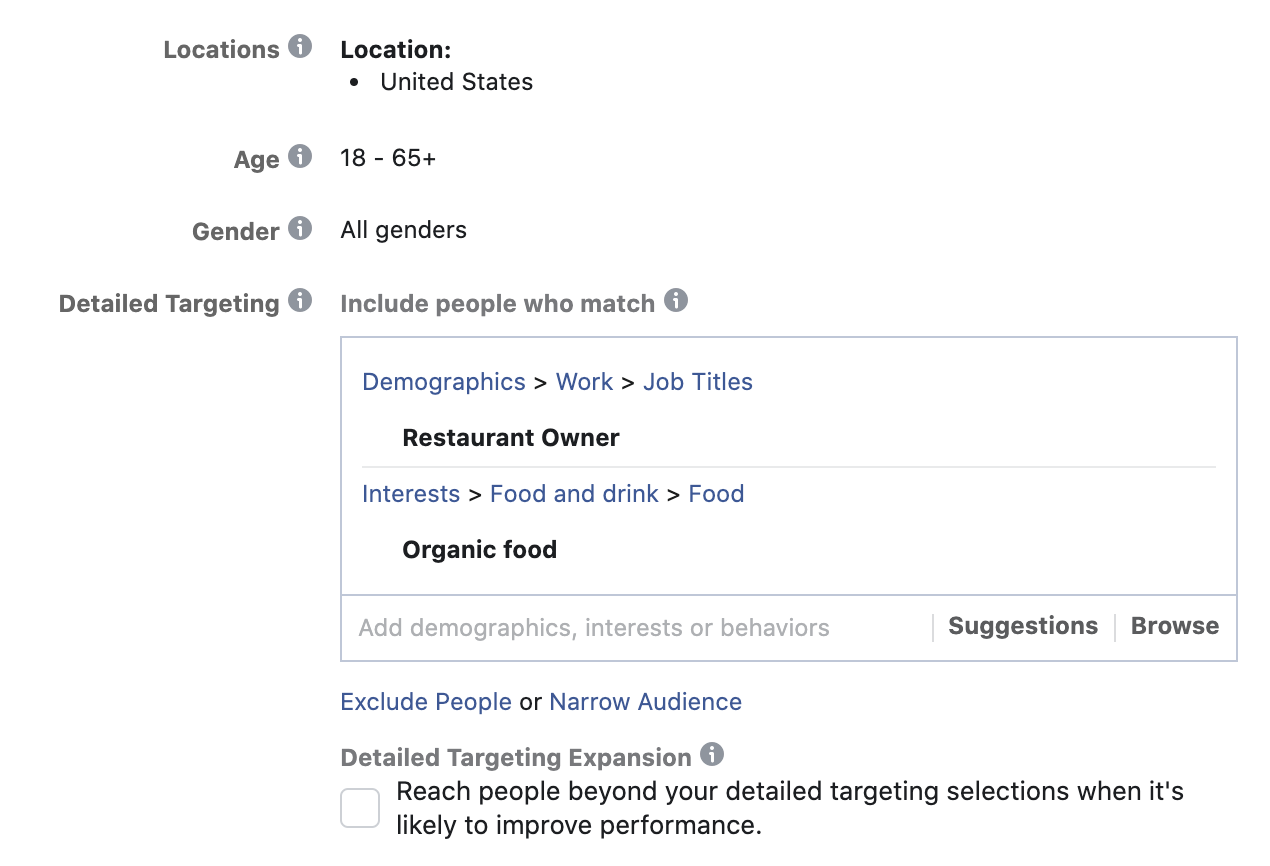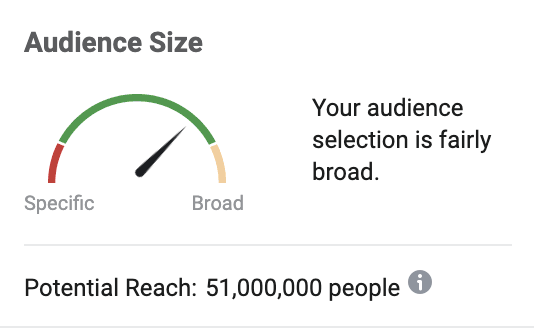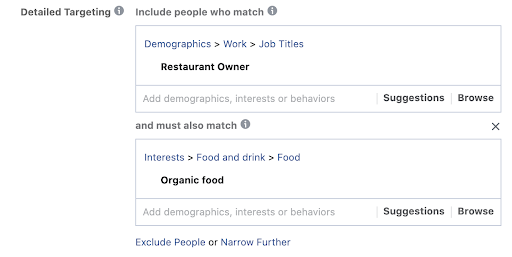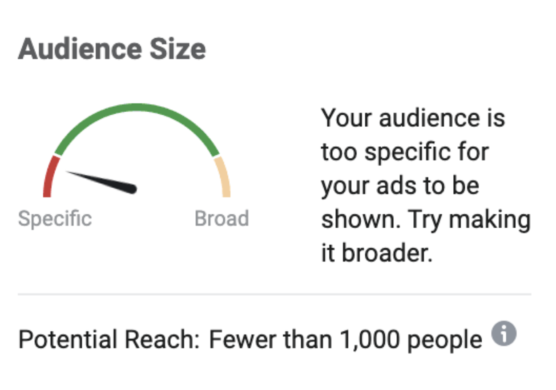Why Businesses Advertise on Facebook
There are two main reasons why you are one of the 7 million active advertisers to pay Facebook for advertising.
1. Everyone is on Facebook
Well maybe not everyone, but 1.6 billion daily active users (or 20%(!) of the world’s population). Therefore, if “everyone” is on Facebook, chances are that your clients are there too. They post baby pictures, laugh at memes and, most importantly, wait for your ad to pop up. Clearly, your clients are there ready to buy your product, book an appointment or request a service demo. Am I right?
2. Facebook’s Targeting Possibilities
Business owners and marketing managers get giddy with excitement. Imagine all the opportunities from targeting FB users by location, age, gender, interests, demographics, behavior and connections. So many options! Oh my!
Don’t take me wrong, these reasons to advertise on Facebook are good, real and could lead to a healthy ROI. However, what business owners are wise to remember is that Facebook is just a tool. Used smartly, it can do wonders for your business. On the flip side, even though 7 million advertisers happily pay Facebook, many end up wasting their company’s money. We hope your business is not the one to fall for these sneaky pitfalls of Facebook advertising.
Common Facebook Advertising Mistakes
1. When Your Ads Don’t Reach The Right Target
Facebook targeting possibilities are endless, as is the number of target audiences one can create. This is exactly what makes Facebook advertising so desirable for millions of businesses.
Your customers are on Facebook. Now you just need to turn on some filters and, boom, the magic happens – you have your custom audience.
The simplicity of this tool can be very misleading. In fact, through our work with many small businesses, we KNOW that many (too many!) people use it incorrectly.
Practical Example:
Say you have a business that sells organic produce to restaurants in the USA.
Naturally (no pun intended), you want to target restaurant owners in the USA with interests in organic food.
The strategy is there and the idea makes sense. Unfortunately, many business owners and even marketing managers fall short bringing this plan to life.
Here is what we often see people do:

They combine “restaurant owner” demographic with “organic food” interest hoping, incorrectly, to target a restaurant owner with interest in organic food.
What actually happens is facebook shows your ad to any restaurant owner OR to anyone with interests in organic food. That is to say, that now my father-in-law who is all about organic produce but has no interest or need in restaurant produce vendors is likely to see your ad. Oh-oh… Company money wasted.
The Facebook advertising audience you just created has a potential reach of 51 million people! Rule of thumb, if your audience seems too broad, it probably is.

What our organic produce supplier actually wanted to do is to use layered targeting:
Step 1: Add restaurant owners – potential audience reach is 3200 people

Step 2: Click on the “Narrow Audience” link right below and only then add organic food interest.

Your target audience now got reduced to fewer than 1000 people. This is a clear cut case of “less is more”. Our organic produce supplier is much better off spending money on 1000 restaurant owners with interest in organic food than on 51,000,000 people (including my father-in-law!) who are interested in organic food (even though a tiny percentage of them might be restaurant owners!).

2. Your Audience Doesn’t Match Campaign Goals
First things first. Before we can talk about the much needed match between the type of audience and FB campaign goals, let’s for a minute ponder on the latter.
Facebook conveniently defines three campaign goals: awareness, consideration, and conversion. It probably goes without saying that what everyone wants is conversion. And if conversion is THE goal, why would anyone pay FB for anything else? Sales funnel is the answer. A journey your ideal client goes through before he or she makes a conscious decision to become a paying customer.
This journey typically has three milestones which are perfectly aligned with FB campaign goals – awareness, consideration, and conversion. Here is a quick summary of each.
Awareness:
First, people need to know that your brand exists and what value it adds. What problems does it solve? How does it make something better, easier, faster, healthier… You get the point. You should use awareness campaigns if you want to reach people who haven’t interacted with your brand in the past. Think about it as an introduction – your digital elevator pitch.
Consideration:
When awareness is there, a person is much more likely to consider your brand as an option. Therefore, people want to “learn more” when they are considering your product or service. At this stage they also often compare your brand against your competition. How long this process takes depends on your product or service. Consumers are more likely to instantly pull a trigger on a $9.99 pair of socks, but can get stuck in a consideration limbo for months thinking about spending $1,500 on a workout machine.
What’s important here is to make progress building a connection with your potential client. Consideration campaigns should be used to heat up a lukewarm audience. Prior website visitors or email marketing lists work great to create Facebook advertising audiences for consideration campaigns.
Conversion:
To run a successful conversion campaign, target potential clients who are likely to be close to your most desired outcome – buying what you sell. Here, you want to target people who already have a relationship with your brand. Create FB audiences using CRM or marketing automation software like Hubspot to target the warmest prospects – people who engaged with your emails, talked to you at the conference, requested a sample, or downloaded your case study. People who already see you as a front runner among your competition. After all, it was your brand’s case study they shared with their boss. Am I right? So the conversion stage is all about getting your bottom of the funnel prospects to take the most meaningful action with your brand – pull out a credit card, schedule a demo, start a trial.
Phew… by now, it’s probably clear that, as tempting as it might be, it’s NOT a good idea to only focus on a conversion stage of your sales funnel. It’s also not wise to expect cold audiences to take immediate actions making time, money, or mental energy commitments.
Let’s look at this example of a fruitless FB campaign:
You set up a conversion campaign targeting a relevant but totally cold audience. Your ad asks them to make a strong commitment. “Are you dealing with the XYZ problem?? We are here to help. START A TRIAL NOW.” Rest assured that this trial is not going to happen. This audience just met your brand. They might’ve just realized that they have the XYZ problem or that a solution to the XYZ problem even exists and are not ready to commit. At this stage consumers simply want to learn more.
If you are going for a cold audience, start with a brand awareness campaign. Your FB ad dollars will be much better spent on an ad like this “Are you dealing with the XYZ problem? We’ve helped people like you before. Watch a video on how we did that.”
3. You Don’t Invest Enough Money or Enough Time.
At any given point in time, there are people at different stages of their buyer’s journey. Some are just starting it now and some are close to signing the deal. Yet others are somewhere in between. You want your brand to be there every step of the way. Warning: being there every step of the way is not cheap. Also, there is no promise of instant gratification. The upside is that the money you put in is an investment in your company’s prospects and lead nurturing. Let’s agree that it’s better to invest more money and receive a positive ROI than to waste smaller budgets on scattered Facebook ads with no clear strategy or follow through.
Example:
If you start your Facebook advertising expecting to show an ad to a (hopefully) appropriate audience with a picture of a treadmill and a big BUY NOW button, you won’t sell many (maybe not any) treadmills. In this scenario, you didn’t invest ad dollars in raising brand awareness and didn’t help your prospects to “learn more” about the product.
Customers who are ready to buy a treadmill, will not buy it from you. They’ll prefer to buy it from your (oh, not so) friendly nemesis brand with whom they connected before. The customers who are not ready to buy (top and middle of the sales funnel) will not be impressed or engage with a big red CTA button and artificial sense of urgency. Your brand has effectively missed the boat. The boat, that your competitors were likely riding all along.
So if you plan to pay Facebook for advertising, you should look at it as a long-term investment. Like with any long-term investment, you first need to have a sound strategy in place. Define campaigns, ad groups, messages, goals, milestones that make sense for your business and your industry. Describe how you intend to move your prospects through the funnel with Facebook ads. Plan for and allocate an annual Facebook marketing budget and don’t expect instant results. Don’t put out an ad with a “goal” to try this and then try that. That’s not a plan, it’s a recipe for wasting money on Facebook.
4. Your Ads Are Generic and Not Visually Appealing
And voila! We’ve come full circle. Remember we started this conversation saying that Facebook is an extremely saturated cyber space, both in terms of users and advertisers. Facebook advertising in many ways comes down to competition for users attention. Your company enters that competition with one arm tied behind your back if your ad’s “creative” is unimaginative, generic, or nothing more than a $.99 cent stock illustration!
The best way to capture viewers attention is to invoke an emotion – something a $.99 cent illustration is not likely to do. For instance, a creative direction could be pointed towards positive feelings evoked by humor, pleasant surprise, nostalgia, romance, happiness. Less pleasant feelings might also be appropriate depending on the business and its mission – concern, sadness, disappointment, unpleasant surprise.
A secondary (but equally important) task is to connect that emotion to your brand in a meaningful and memorable way. You want to avoid a situation where someone remembers seeing an awesome ad but doesn’t remember what brand it promoted. Good news is that according to The Influences of Emotion on Learning and Memory study “emotion has a particularly strong influence on attention, especially modulating the selectivity of attention as well as motivating action and behavior.” And of course it is now well known that emotionally charged situations lead to longer lasting memories. So the job of connecting an emotion to a brand is not particularly hard but it has to be intentional.
Refer to this quick creative checklist to analyze visual assets for your ads:
-
Don’t use generic stock images or cheap illustrations
-
Envision this image in a scroll of FB content. Does it pop?
-
Ask yourself if this image makes you feel anything
-
Does this image reflect your brand ID through colors, fonts, layout?
-
Does it connect the viewer's emotion to your brand?
Conclusion
No brand wants to shove marketing $$$ down the whirlpool of facebook blender. Elevate your company to the next level and stop drinking this “cocktail” of unmet facebook ads expectations. Do the necessary work of planning, strategy, and budgeting upfront. Define your goals and map out the customer journey. Make sure that you got it right, then commit to the plan and begin the execution.